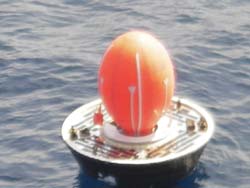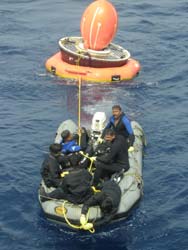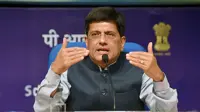ISRO keenly awaits government nod for India's “human” space flight
28 Apr 2008
Bangalore: The Indian Space Research Organisation (ISRO) has submitted a project report on its proposed 'manned' mission that clearly spells out the roadmap for the prestigious project. ISRO has also taken care to re-phrase the project as 'Indian human space flight,' probably respecting the fact that it is living in the age of political correctness.
The mission, slated for launch in 2015, will require investments of about Rs10,000 crore, according to to ISRO.
 Agency officials have said they expect the Union cabinet to approve the project in the coming months. They also feel that given its prestigious nature, programme approval should not be a problem. Also, given the fact that ISRO's annual budget is a paltry Rs4,000 crore, a spread of an additional Rs10,000 crore over five-six years, which India's human flight requires, should not pose any problems for the government.
Agency officials have said they expect the Union cabinet to approve the project in the coming months. They also feel that given its prestigious nature, programme approval should not be a problem. Also, given the fact that ISRO's annual budget is a paltry Rs4,000 crore, a spread of an additional Rs10,000 crore over five-six years, which India's human flight requires, should not pose any problems for the government.
The real challenges for the programme are more technical than administrative, ISRO officials feel, more so after having spent more than five years examining the challenges that the programme poses for the orgamisation's scientists and engineers.
The programme will aim to develop a space vehicle which will carry a crew of two into low earth orbit and return them safely to a pre-determined destination. The mission is expected to be of a week's duration and will have provision for emergency mission abort and crew rescue.
One of the main tasks facing ISRO scientists is "man-rating" of the indigenously designed and built Geosynchronous Satellite Launch Vehicle (GSLV), which would launch an autonomous orbital mission vehicle. According to ISRO scientists, the reliability of the GSLV is about 90 per cent, while ''man rating'' it would require a reliability factor of 99.99 per cent.
There are other technological challenges involved in the programme, such as designing the crew module and establishing training facilities for astronauts.
 ISRO has already taken a few preliminary steps in establishing technologies for such a programme, notably in January last year, with the successful launch, in-orbit operation, re-entry and recovery of SRE-1 (Space Capsule Recovery experiment). The programme allowed India to demonstrate its capabilities in developing, and deploying important technologies such as aero-thermo structures, deceleration and floatation systems, navigation, guidance and control, with the successful launch, in-orbit operation, re-entry and recovery of the capsule.
ISRO has already taken a few preliminary steps in establishing technologies for such a programme, notably in January last year, with the successful launch, in-orbit operation, re-entry and recovery of SRE-1 (Space Capsule Recovery experiment). The programme allowed India to demonstrate its capabilities in developing, and deploying important technologies such as aero-thermo structures, deceleration and floatation systems, navigation, guidance and control, with the successful launch, in-orbit operation, re-entry and recovery of the capsule.






















